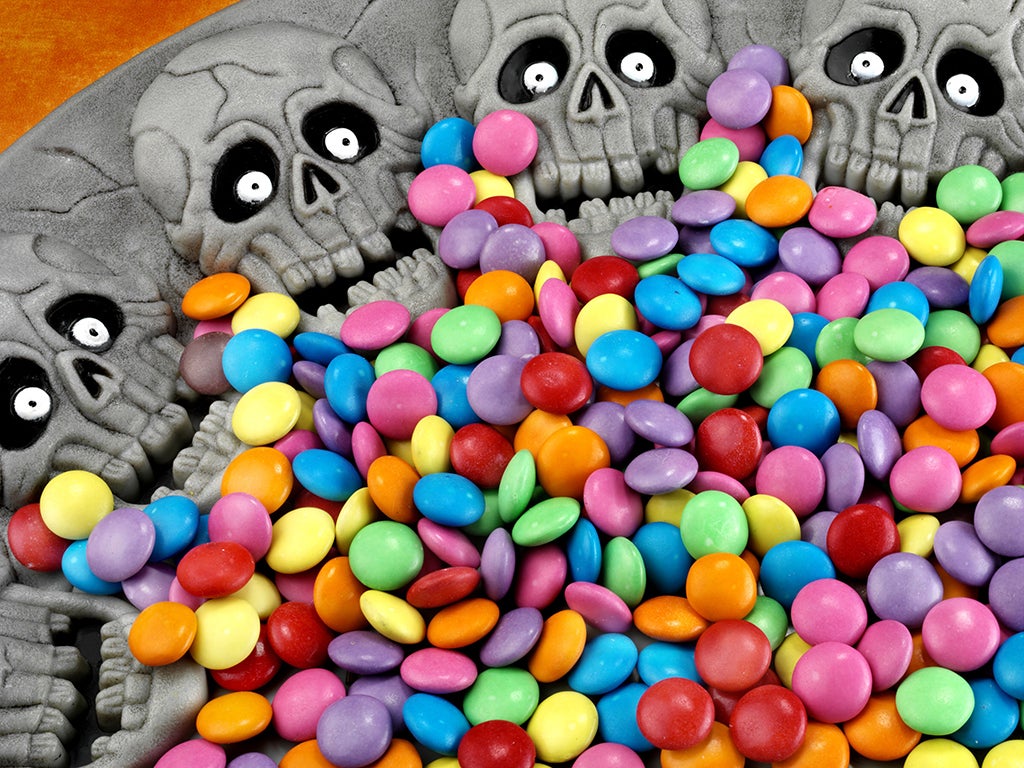The Independent's journalism is supported by our readers. When you purchase through links on our site, we may earn commission.
What happens to your body an hour after a sugar binge?
The most dangerous contributing factor with sugar is underestimation. We assume that because sweets, chocolates and drinks are sold in packets/bottles of certain sizes, that they’re fine to consume in one sitting - but this is far from the case.

Your support helps us to tell the story
From reproductive rights to climate change to Big Tech, The Independent is on the ground when the story is developing. Whether it's investigating the financials of Elon Musk's pro-Trump PAC or producing our latest documentary, 'The A Word', which shines a light on the American women fighting for reproductive rights, we know how important it is to parse out the facts from the messaging.
At such a critical moment in US history, we need reporters on the ground. Your donation allows us to keep sending journalists to speak to both sides of the story.
The Independent is trusted by Americans across the entire political spectrum. And unlike many other quality news outlets, we choose not to lock Americans out of our reporting and analysis with paywalls. We believe quality journalism should be available to everyone, paid for by those who can afford it.
Your support makes all the difference.The odd seasonal sugar binge isn’t something which only kids are partial to; adults like a good old gorge on chocolate and sweets every now and then too. But just because the occasion suits it, doesn’t make your body any more accepting of it.
The immediate effects of a sugar binge might not be outwardly obvious, but the situation inside your body is considerably more chaotic.
Here’s a timeline of what happens during the hour following a particularly heavy sugar session.
0 - 15 minutes
Sugar and bacteria in the mouth mix together to form an acid, which punishes tooth enamel.
15 - 30 minutes
The sugars pass through the stomach and reach the small intestine. Here, they are broken down and absorbed into the bloodstream.
The pancreas then releases insulin to try and cope with influx of sugars, and convert what it can into energy.
This is then sent to muscle cells throughout the body; but the sheer amount of sugar in the blood will mean that some of it will have to be sent to the liver and stored as fat.
While this is going on, the body interprets this significant rise in sugar and energy as the result of stress, and releases cortisol and epinephrine.
These hormones cause the heart rate to increase, which will in turn cause blood pressure to rise, and may induce sweating.
30 - 45 minutes
The sugar high caused by the release of dopamine in the brain is likely either in full flow, or has passed and is now beginning to waver.
What comes next is an almighty sugar crash, caused by insulin and stress hormones working overtime and leading to a dramatic drop in blood sugar.
Lethargy, sluggishness and maybe even irritability may follow, and this drop in blood sugar may even cause a headache.
In response, your stress hormones try to stabilise your blood sugar levels and extract what they can from your liver.
Somewhere in this process, sugar expanding in the stomach and gut and evacuating has also probably caused feelings of pain, discomfort and flatulence.
Beyond 45 minutes
Rising and falling hormone levels have an inevitable detrimental effect on the immune system, which is temporarily rendered less able to deal with harmful infections.
This is all dependent on how much sugar you eat, and your metabolism. But in some instances, the immune system can be inhibited for up to five hours after a binge.
Perhaps the most dangerous contributing factor when it comes to sugar and snack binges is underestimation. We assume that because sweets and chocolates are sold in packets of certain sizes, that they’re fine to consume in one sitting. But this is far from being the case.
Food labels carry a table containing GDA information, which will tell you that the recommended daily intake of sugar is 90g. However, when it comes to products which contain added sugar, like chocolate and sweets, this isn’t actually the case.
The 90g figure is your total sugar GDA, and so includes those sugars found in your main meals. The NHS advises that no more than five per cent of your daily calorie intake should come from foods with added sugars. So when it comes to chocolate, sweets and fizzy drinks, your recommended intake is actually closer 30g or maybe even less.
Here’s some points of reference. A (330ml) can of Coke contains 35g, and a Mars Bar (51g) contains 30.5g of sugar.
So while there’s nothing wrong with the odd treat, choose your snacks wisely, don’t overdo it, and educate your children to do the same. The above should demonstrate the often invisible but considerable effort the body has to put in to cope with a high influx of sugars. The more you space your sugar intake out gradually over the course of your day, the easier a time your body will have processing it.
Dr Wayne Osborne is Head Doctor at online health website Treated.com
Join our commenting forum
Join thought-provoking conversations, follow other Independent readers and see their replies
Comments